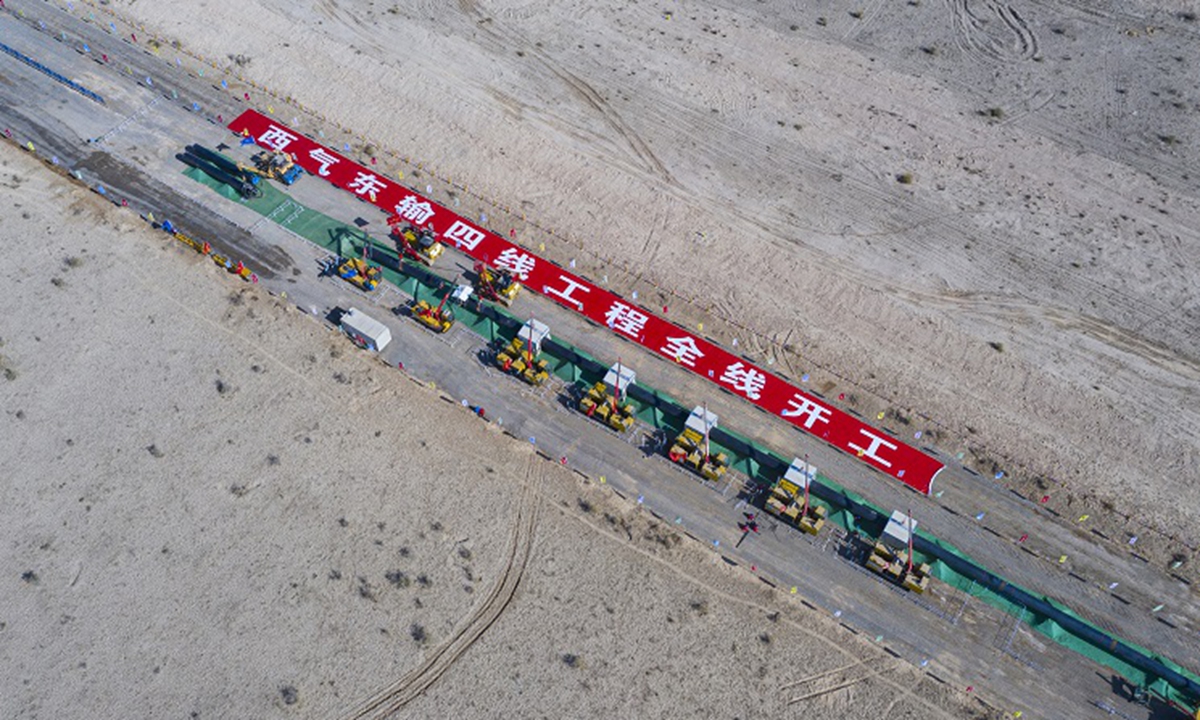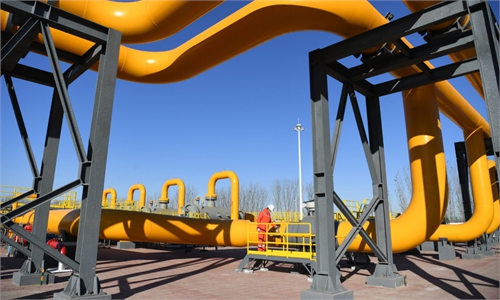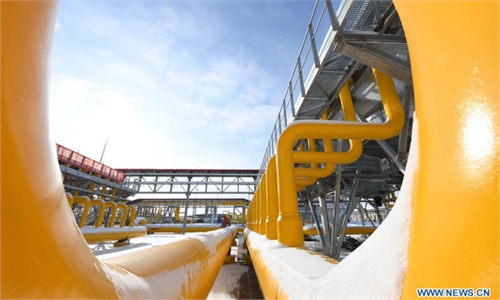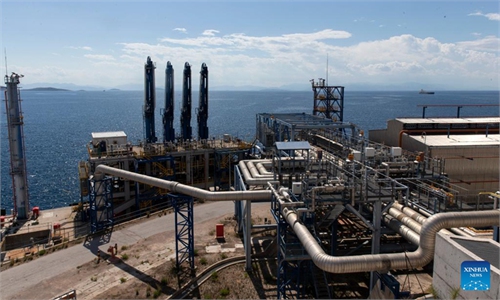
The No.4 pipeline of China's west-to-east gas transmission project is under construction. Photo: Screenshot of the official website of Pipe China
Construction of the No.4 pipeline of China's west-to-east gas transmission project started on Wednesday, which is designed to lift the annual carrying capacity of the system to more than 100 billion cubic meters (bcm) after linking with the completed No.3 and No.2 pipelines, state-owned Pipe China, the builder of the project, said on its website on Wednesday.The No.4 gas pipeline will be 3,340 kilometers long, starting from Wuqia county in Northwest China's Xinjiang Uygur Autonomous Region to Zhongwei in Northwest China's Ningxia Hui Autonomous Region.
According to the construction plan, the core phase of the No.4 pipeline from Turpan in Xinjiang to Zhongwei, crossing two autonomous regions and one province over the course of 1,745 kilometers, will have priority in the work.
The Turpan-Zhongwei phase is designed to carry 15 bcm annually, which will double after the extension, largely easing the peak winter transmission load connecting domestic gas fields in the Tarim Basin in Xinjiang, said Pipe China.
Advanced construction techniques will be used to complete one kilometer of pipeline every four days. The new pipeline and related equipment will be deployed next to in-service pipeline to reduce cost and damage to the environment.
Work on the west-to-east gas transmission project began at the turn of the century. The current annual capacity is 77 bcm, and the cumulative volume shipped has reached 750 bcm, according to Pipe China.
Lin Boqiang, director of the China Center for Energy Economics Research at Xiamen University, told the Global Times on Wednesday that the 100 bcm of annual capacity will generate strong support for the nation's energy security.
China's natural gas consumption stands at 300-400 bcm a year.
"Eastern China is the major natural gas consumption region, but its demand cannot be totally satisfied by current natural gas transmission facilities," said Lin, noting that the west-to-east gas transmission project will resolve this problem, and transmission capacity will grow as more oil and gas reserves are found.
The start of construction for the No.4 pipeline followed a series of recent developments in China's effort to bolster energy infrastructure and supply, including the start of operation at China's largest liquefied natural gas reserve base in East China's Jiangsu Province on Monday.



